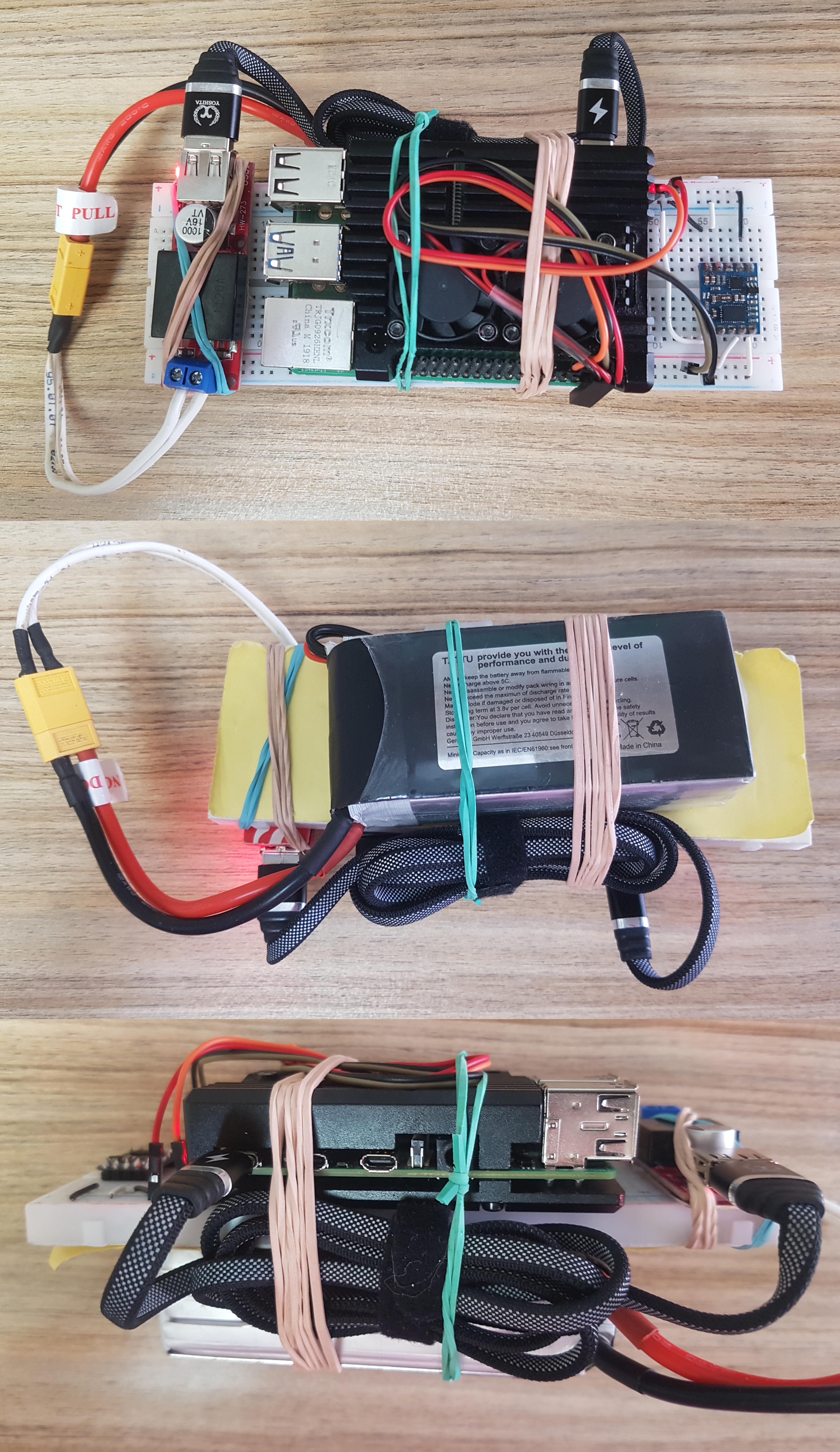Implementation of Regression Models(DRNN + SVR + KNR) Against Kalman Filters for the Calculation of Quaternions and Euler Angles
1. Gyroscope Data 3DoF
2. Accelerometer Data 3DoF
3. Magnetometer Data 3DoF
4. Euler Angles Data 3DoF
5. Quaternions Data 4DoF
To collect the data, I made a small setup using a Raspberry pi and BNO055 IMU. So simple but it works wonderfully.
1. Raspberry pi 4
2. BNO055 9DoF IMU
3. Lithium Polymer Battery
4. Buck Converter
5. USB-C to USB-A Adapter
6. Breadboard
7. Bunch of Jumper Wires
**Note:** It should be portable, So the data collection is not constrained to a specific location and angle.
Here is the code for the data collection. First, the code is written in C++. The code contains a loop with a constant frequency of 100Hz. The loop reads the IMU data for 5 minutes and writes it to a ".csv" file at each iteration.
There is a Executable file for the Code in the same folder. But in case you want to run the code, you need to install the WiringPi library from here.
There is another prerequisite for the code to run. High speed I2C (400kHz) in the used Raspberry pi 4 have to be anabled. For the purpose use the procedure described in the here.
After handling all, the code is ready to be compiled.
So, Navigate to the folder where the code is and run the following bash command:
$ g++ -o CollectorApp *.cpp -lwiringPi -lm -std=c++11
Now the executable file is ready to be run like this:
$ ./CollectorApp
Note: The files having "(No Mag)" in there names, don't contain magnetometer data.
For the purpose of this project, I used the following models:
- Deep-RNN Model
- Support-Vector-Regression Model
- K-Neighbours-Regression Model
Seems Like the Complexity of the data is so much that the RNN Model is not able to handle it.
And it had a huge RMS of 0.5 in it's predictions and also the model stopped learning after a few epochs. Although the learning rate was adaptively adjusted.
So, I decided to use the Multi Output Support Vector Regression model. Which seemed to handle the data better. But, also the Model didn't perform well enough!
So, as a last resort, I used the K-Neighbours Regression model. Which turned out to be the finest model for this data...
And with a bit of tuning, it was able to perform the best on the data. with a mean absolute error of 0.0043 for Quaternions and 3.3 for Euler Angles.
(Note: The mean absolute error is the average of the absolute errors of the predictions)
